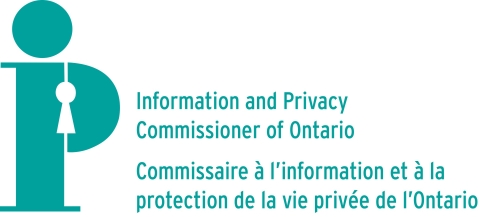Ontario's privacy commissioner joins national call for legal limits on the use of facial recognition technology by police Français
Patricia Kosseim addresses House of Commons committee, emphasizing the need for safeguards, accountability, and transparency
TORONTO, May 2, 2022 /CNW/ - Ontario's Information and Privacy Commissioner, Patricia Kosseim, and Canada's federal, provincial, and territorial privacy commissioners issued a joint statement and guidance on the use of facial recognition technology by law enforcement.
In her comments today before the House of Commons Standing Committee on Access to Information, Privacy, and Ethics, Commissioner Kosseim stressed that while the guidelines will help guide police in their use of facial recognition technology, laws designed specifically to govern the use of this technology by police are urgently needed to better protect Canadians.
"Although we believe these guidelines represent important risk mitigation measures, ultimately, we recommend the establishment of a comprehensive statutory regime governing the use of facial recognition technologies by police," said Commissioner Kosseim. "Clear guardrails with the force of law are necessary to ensure police agencies can confidently make appropriate use of facial recognition technology, grounded in a transparent framework capable of earning the public's enduring trust."
In her remarks to the committee, the commissioner highlighted five key elements of the new privacy guidance on facial recognition for police agencies:
- Before using facial recognition technologies, police agencies should seek legal advice specific to their jurisdiction and establish that they are lawfully authorized to use it
- Police need to adopt strong accountability measures, including conducting a privacy impact assessment before deploying the technology and implementing a robust program that is reviewed annually to mitigate privacy risks· Quality and accuracy controls are essential to avoid false positives and reduce the potential for bias against individuals, groups, and communities
- Clear limits must be established for how long images will be retained and how they will be destroyed if they do not register a match or are no longer needed
- Transparency by police is absolutely critical as are open communications with the public and consultations with local communities on the design of facial recognition programs prior to their deployment
Facial recognition technologies have the potential to assist police in solving serious crimes and finding missing persons. They can also pose serious privacy risks, even in public places where people have the expectation of being able about to go about their daily activities anonymously.
The IPC has identified Next-Generation Law Enforcement as one of four priority areas to guide its work. The goal of this priority is to contribute to building public trust in law enforcement by working with relevant partners to develop the necessary guardrails for the adoption of new technologies and community-based approaches that protect both public safety and Ontarians' access and privacy rights.
Police must be transparent and accountable in their use of this technology to maintain the public's trust. The guidelines released today help guide law enforcement agencies, but a new legal framework must be developed to specifically govern the use of facial recognition technologies by police.
Learn more:
- Commissioner Kosseim's comments to committee
- Recommended legal framework for police agencies' use of facial recognition (joint statement by federal, provincial and territorial privacy commissioners)
- Privacy guidance on facial recognition for police agencies
- Draft privacy guidance on facial recognition for police agencies, June 2021
- Blog on facial recognition by Commissioner Kosseim
- IPC Privacy Day Webcast: Law Enforcement and Surveillance Technologies
- IPC Strategic Priorities 2021-2025
SOURCE Office of the Information and Privacy Commissioner/Ontario

Share this article